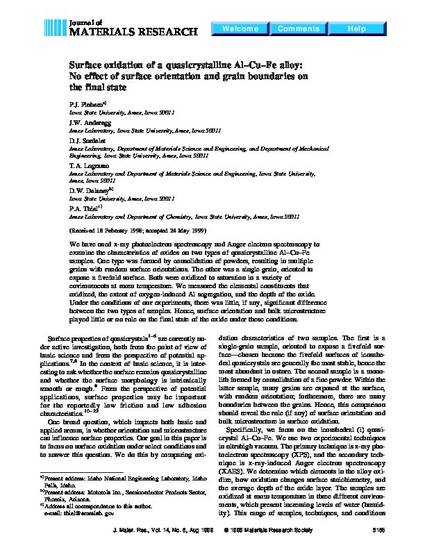
We have used x-ray photoelectron spectroscopy and Auger electron spectroscopy to examine the characteristics of oxides on two types of quasicrystalline Al–Cu–Fe samples. One type was formed by consolidation of powders, resulting in multiple grains with random surface orientations. The other was a single grain, oriented to expose a fivefold surface. Both were oxidized to saturation in a variety of environments at room temperature. We measured the elemental constituents that oxidized, the extent of oxygen-induced Al segregation, and the depth of the oxide. Under the conditions of our experiments, there was little, if any, significant difference between the two types of samples. Hence, surface orientation and bulk microstructure played little or no role on the final state of the oxide under these conditions.
Available at: http://works.bepress.com/thomas_lograsso/9/

This article is from Journal of Materials Research 14, no. 8 (1999): 3185–3188, doi:10.1557/JMR.1999.0427.